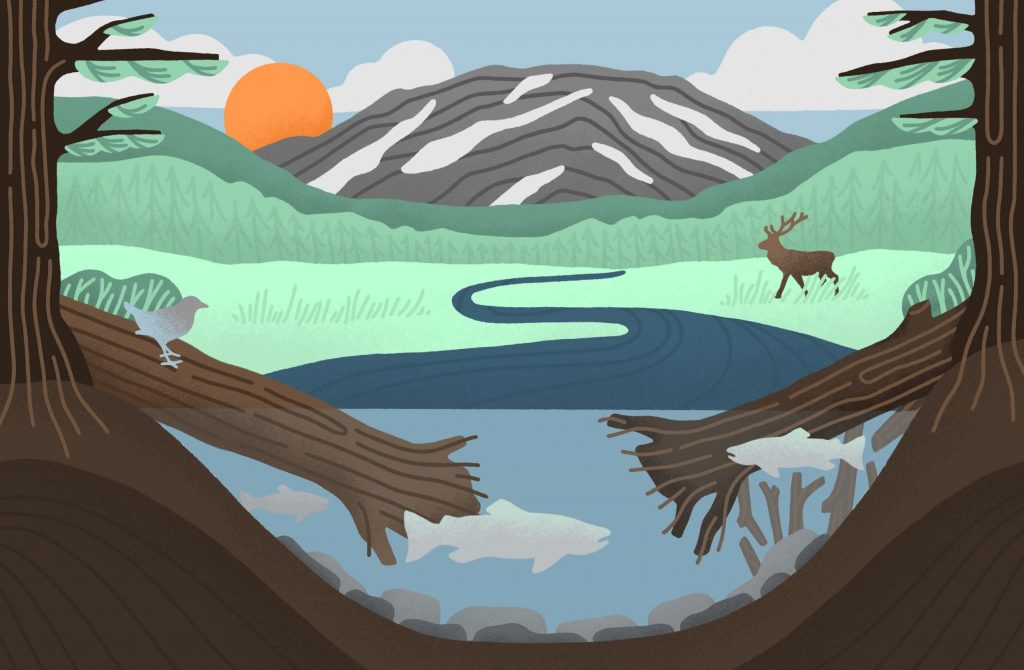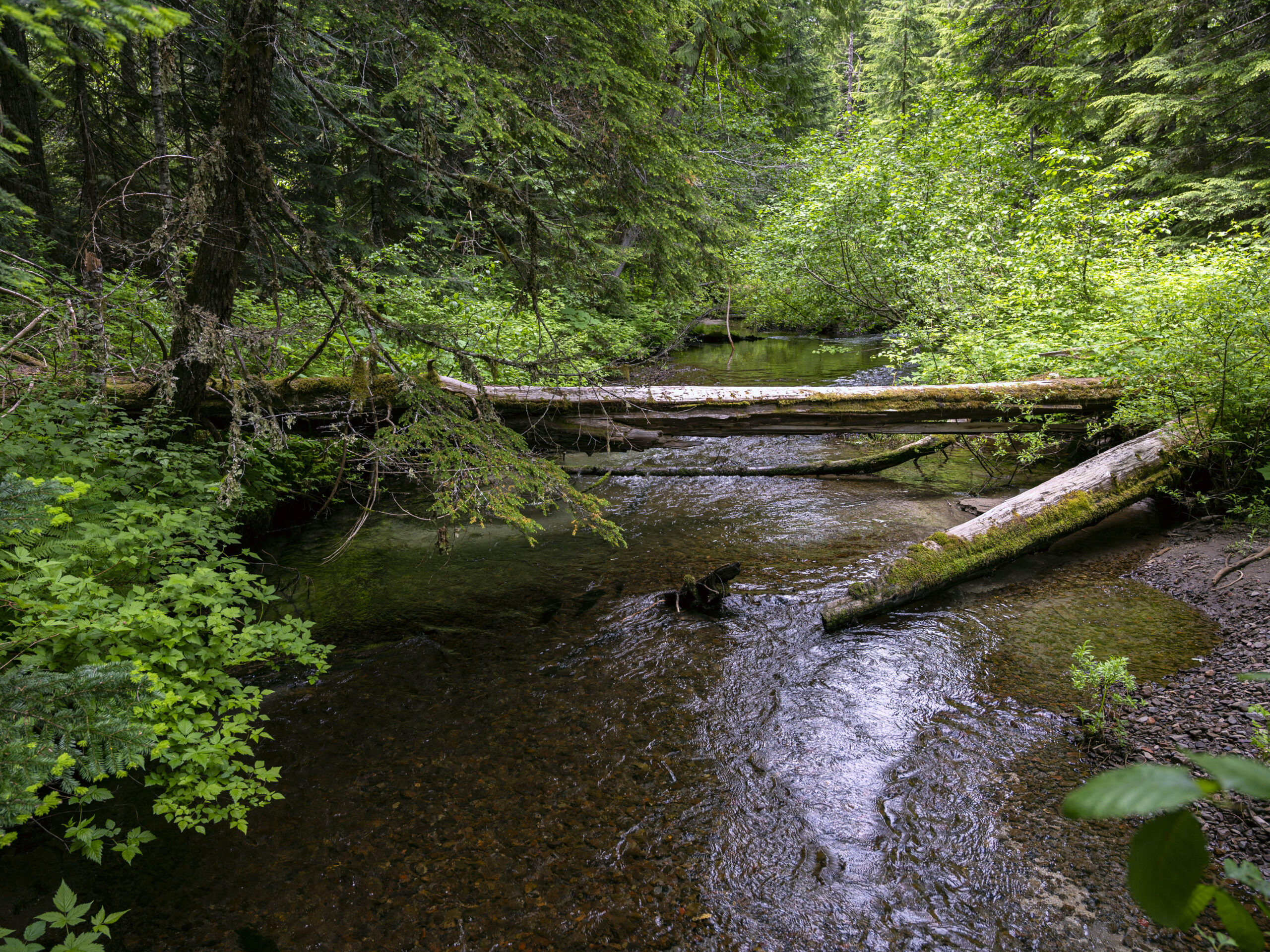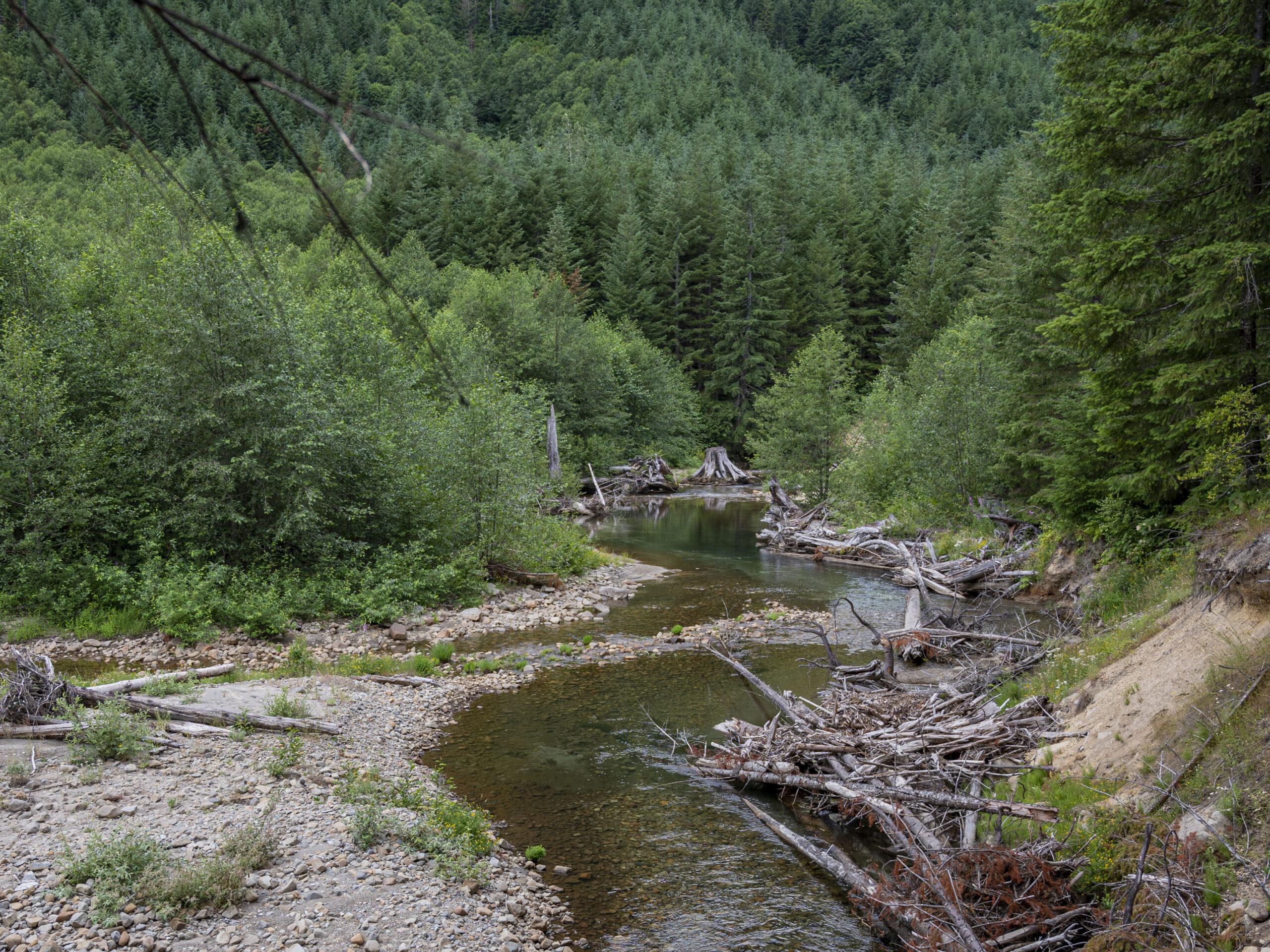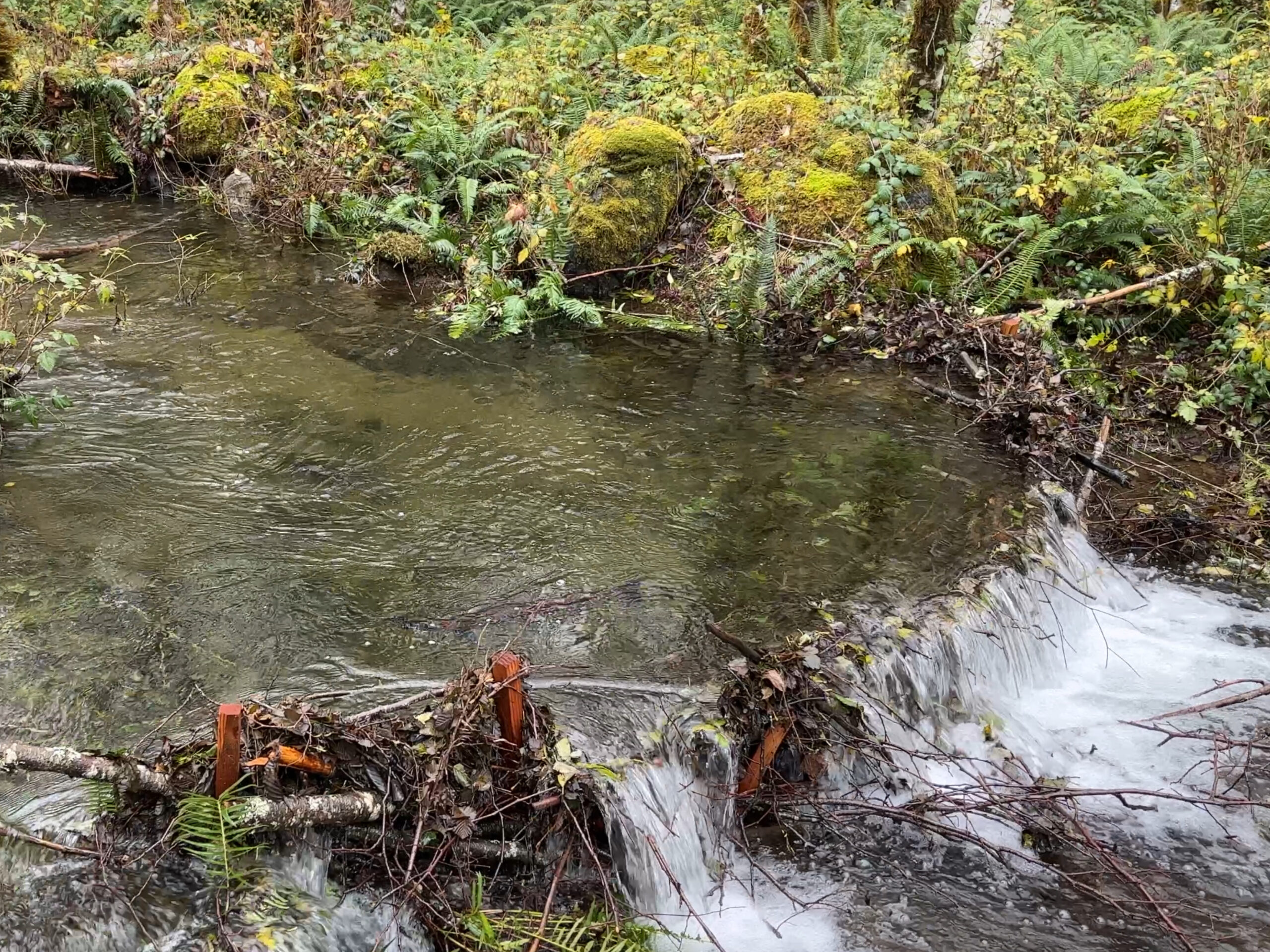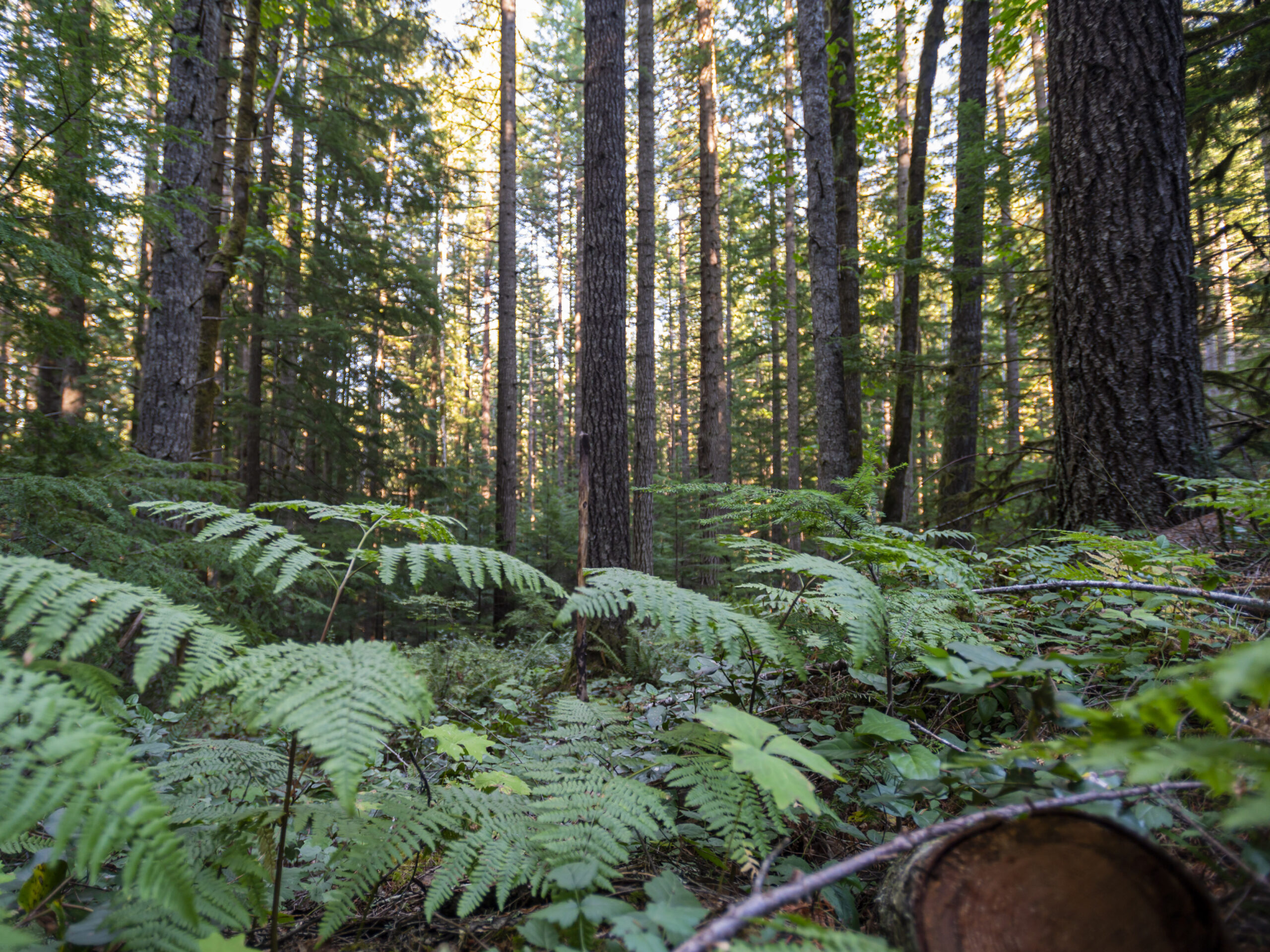12-16-2020
News Release


The Cascade Forest Conservancy has launched a new initiative called the Instream Wood Bank Network. The network has the potential to revolutionize the scope, scale, and efficiency of aquatic restoration in southwest Washington and beyond.
The Instream Wood Bank Network was designed by Shiloh Halsey, Cascade Forest Conservancy’s Director of Programs, to address two challenges common to restoration professionals throughout the West; a lack of wood in streams and rivers and difficulty sourcing the wood needed for restoration.
Restoration experts say that before the removal of old-growth trees along rivers and streams, waterways contained more downed trees which diversified aquatic habitat and created deep cool pools needed by many aquatic species, including salmon, steelhead, and various trout species. Climate change is warming rivers in the Pacific Northwest, creating dangerous and potentially fatal conditions for migrating salmon and steelhead, making cold water refugia increasingly important to the survival of spring and summer runs of wild fish. (See Chuck Thompson’s July 23, 2020, piece for Columbia Insight “Thermal hopscotch: How Columbia River salmon are adapting to climate change” https://columbiainsight.org/thermal-hopscotch-how-columbia-river-salmon-are-adapting-to-climate-change/ )
“There is a pressing need to restore fish habitat on a large scale. There are fallen trees and logs on timberlands that can’t be sold—all of which could be used to help build back this habitat. But, there has never been a system in place to connect these two ends,” said Halsey. “And that is exactly what the Instream Wood Bank Network is designed to accomplish.”
The network sources non-saleable wood, then employs local contractors to move wood to a series of wood banks that are set up across the region. The network then provides these logs to restoration groups throughout southwest Washington.
“This is a game-changer for aquatic restoration,” said Brice Crayne of the Lower Columbia Fish Enhancement Group, one of many partner groups benefiting from the new initiative. Other partners and stakeholders include Cowlitz Indian Tribe, South Puget Sound Salmon Enhancement Group, U.S. Forest Service, Washington Department of Natural Resources, and others.
In addition to supplying wood for restoration, the network advances restoration in new areas by helping to prioritize, design, and coordinate the installation of small and medium-sized wood structures to increase restoration efforts in critical habitat areas not being addressed through existing efforts.
The network is currently focused on restoring watersheds in the southern Washington Cascades. With time, the Cascade Forest Conservancy hopes to expand the network into other areas of the Cascades.
More Information:


